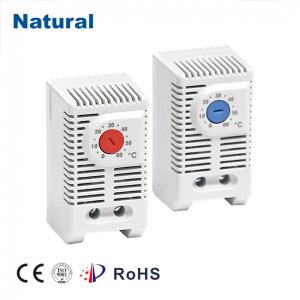Thermostat temperature controllers have come a long way since their inception, revolutionizing the way we manage indoor climate control. From simple mechanical devices to smart, internet-connected systems, these controllers have played a crucial role in enhancing our comfort, energy efficiency, and overall quality of life.

The Early Days: Mechanical Thermostats The history of thermostat temperature controllers dates back to the 17th century when Dutch scientist Cornelis Drebbel invented the mercury thermostat. This simple device used the expansion and contraction of mercury to control temperature. However, it wasn’t until the 19th century that these devices gained popularity, with the development of the first practical bimetallic thermostat by Andrew Ure. Mechanical thermostats remained the norm for much of the 20th century. These devices relied on the physical properties of materials to control temperature, making them reliable but not very precise. They were a significant improvement over manual control but lacked the sophistication we see today. The Digital Revolution: Electronic Thermostats The 1980s brought a significant leap in thermostat technology with the advent of electronic thermostats. These devices replaced mechanical components with electronic sensors and microprocessors, offering greater accuracy and flexibility in temperature control. They also introduced features like programmable schedules, allowing users to set specific temperature profiles for different times of the day or week. The shift to electronic thermostats marked the beginning of energy-efficient climate control. By accurately maintaining desired temperatures and allowing for scheduled setbacks when not needed, homeowners could reduce their energy consumption and lower utility bills. These thermostats paved the way for a more sustainable and environmentally friendly approach to indoor climate control. The Smart Thermostat Era In the 21st century, thermostats underwent a transformation with the introduction of smart technology. Smart thermostats, like the Nest Learning Thermostat, brought connectivity and automation to a new level. These devices could be controlled remotely through smartphone apps and learned users’ preferences to optimize heating and cooling. One of the key advantages of smart thermostats is their ability to adapt to real-time conditions. They can connect to weather forecasts, occupancy sensors, and even geolocation data to ensure that your home is at the ideal temperature when you arrive. This level of intelligence not only maximizes comfort but also minimizes energy waste. The Future of Thermostat Temperature Controllers As we look to the future, the evolution of thermostat temperature controllers continues. Artificial intelligence (AI) is playing an increasingly significant role in enhancing the capabilities of these devices. AI algorithms can analyze historical data and user behavior to make predictive adjustments, further optimizing energy efficiency. Moreover, the integration of smart thermostats into larger home automation ecosystems is on the rise. These devices can now communicate with other smart appliances like lights, blinds, and security systems, creating a more seamless and convenient home environment. In conclusion, thermostat temperature controllers have evolved from simple mechanical devices to sophisticated, AI-powered systems that offer unprecedented control, convenience, and energy efficiency. As technology continues to advance, we can expect even more innovation in this field, ultimately leading to more comfortable and sustainable homes for everyone. Whether you’re looking to save on energy bills or simply enhance your comfort, the thermostat temperature controller of the future is sure to have something to offer.